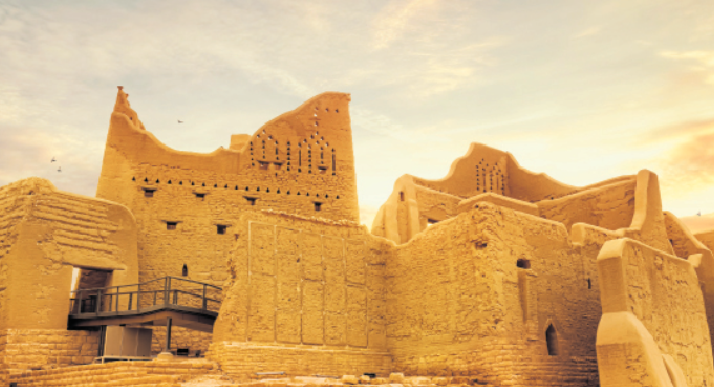Diriyah: The city where history meets modernity

Welcome to Inside Saudi, our series providing readers in the City and beyond with insights from Saudi Arabia,one of the fastest growing markets in the world. Each week we’ll bring you exclusive interviews, news you can use and spotlight the companies making things happen in the Kingdom of Saudi Arabia.
Take one UNESCO World Heritage site. Give it the gift of a 21st-century neighbour. Mirror local culture in everything that is new. Create an environment in which the pedestrian is king, with cars banished to an intricate underground road network. Invite the world to visit, admire, enjoy and invest.
Add all that together and you have Diriyah, a remarkable development project being created with unprecedented speed above and below a vibrant city on the edge of Saudi Arabia’s capital, Riyadh. It is an environmental showpiece that both echoes its historic surroundings and embraces smart technology, spearheaded by a $63.2 billion investment from the Public Investment Fund (PIF) and driven by a gentle masterplan like no other. “Gentle” because it goes out of its way to avoid the excess of steel and glass that is the hallmark of so many other modern buildings and cities.
Instead, a key element is the use of traditional materials, including Najdi architectural typology with its distinctive mud-brick construction techniques that have been used for centuries, dating back to the first Saudi state. These traditional building methods are being married in construction to the latest energy-saving processes and water recycling technology, and – essential for the heat of a Saudi summer – natural cooling techniques. There will even be filtration systems that “scrub” the air in the underground roads and car parks for some 40,000 vehicles.
Above ground, more than six million native trees, plants and shrubs will be planted to fill the many parks where hiking, biking and horse-riding trails will weave around natural wonders such as Wadi Hanifah, Wadi Safar and the Diriyah oasis.
It is easy to see why pre-sales for Diriyah’s hotel residential units are already in great demand, with buyers attracted by the promise of a galaxy of shops, restaurants, nurseries, schools, museums, galleries, a university campus and a golf course designed by Greg Norman.
As with every new large project – especially one as innovative as this – there will be learning curves, as Jerry Inzerillo, the tough, boisterous global tourism guru brought in six years ago to mastermind the project freely admits. He has unified his many construction partners under a working culture called “One Diriyah”, which he explains like this: “We enjoy our success; but when you do something this ambitious, this unprecedented, the Crown Prince will be the first to tell you we’re going to make mistakes. We learn from those and don’t duplicate them. But in our mistakes, we are one family; we back each other up and we’re very proud of that. As an organisation of 2,400 people, of which 80% are Saudi and 38% are Saudi women, we are all very proud and optimistic about our future. We back each other up – we watch each other’s backs. There is only one Diriyah”.
Amongst a host of major new development projects across the country (a country five times the size of California) Diriyah is regarded as the soul of the Kingdom of Saudi Arabia culturally, in heritage, and in national identity – blending its past and its future with a great sense of pride. That is recognised by the fact that the Arab League declared Diriyah the Capital of Arab Culture for 2030, the same year that the World Expo comes to Riyadh, followed by the World Cup in 2034.
Already the completed first stage of Diriyah has welcomed 2 million tourists, a mere taster for what is to come. By 2030 that number is expected to have swollen to more than 50 million visits annually.
Investors are queuing up to contribute to the masterplan in all kinds of ways, attracted by the concept and the opportunities it offers. The ultimate target is the creation of 180,000 new jobs and the addition of a staggering $19 billion to Saudi GDP.
There is nothing that quite compares with Diriyah, but the designers have in the back of their minds a Florence, a Marrakesh or a Siena. As Jerry Inzerillo says “Diriyah is the jewel. We will never overrun it. We will never overplan it. We love Disney, but that is not us”.
These achievements so far promise that Saudi Arabia is well positioned to become the global leader in the design and construction of culturally sensitive, sustainable and liveable cities. The Kingdom can turn this knowledge and capability into new sources of income as the demand for oil starts to slow.
By Sir Martyn Lewis
Check out more news and features on the Inside Saudi website, www.insidesaudi.media.

 Yahoo Finance
Yahoo Finance 